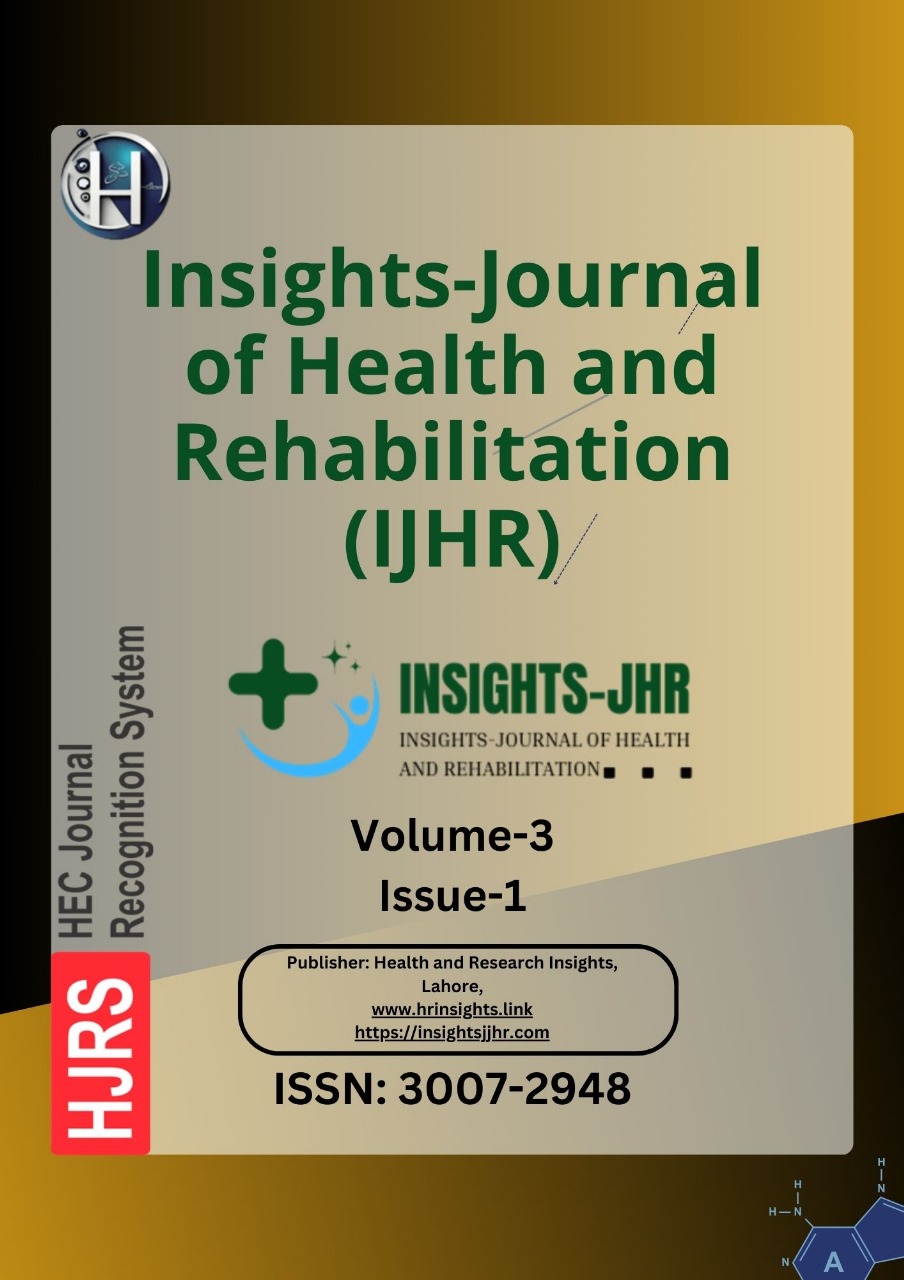CO-RELATION BETWEEN FREQUENCIES OF PREGNANCY AND UTERINE PROLAPSE IN MARRIED WOMEN OF LAHORE, PAKISTAN, A CROSS-SECTIONAL STUDY
DOI:
https://doi.org/10.71000/f2z5sc35Keywords:
Uterine Prolapse, Multiparity, Pregnancy Interval, Vaginal Delivery, Pelvic Floor DysfunctionAbstract
Background: Uterine prolapse is a prevalent gynecological condition caused by weakened pelvic support structures, often affecting multiparous women due to pregnancy and childbirth strain. Additional risk factors include age, menopause, obesity, chronic coughing, and heavy lifting. This condition significantly impacts women's quality of life, leading to discomfort, urinary and bowel dysfunction, and psychological distress. Despite its high prevalence, uterine prolapse remains under-researched, particularly in developing countries like Pakistan. Given the high fertility rates, understanding its correlation with multiparity is crucial for preventive healthcare strategies. This study aims to assess its prevalence in Lahore, examining its association with parity, pregnancy spacing, and delivery mode to improve clinical awareness and healthcare policies.
Objective: This study aimed to investigate the correlation between the number of pregnancies and the occurrence of uterine prolapse among married women in Lahore, Pakistan. Conducted as a cross-sectional study, data were collected from multiple public and private hospitals to assess the impact of multiparity on the prevalence and severity of uterine prolapse.
Methods: This was a cross-sectional study. It was conducted on 184 female patients and they were selected through non-probability convenient sampling technique from multiple public and private hospitals of Lahore. This study was completed in 6 months, from February 2021 to July 2021.The Prolapse Quality of Life (P-QOL) questionnaire was distributed among patients and the data was recorded after taking written consent. The data was analyzed using SPSS version 25.0, and the association was discovered using the Chi square test.
Results: The results showed that Out of 184 patients, 142 (77.17%) were confirmed cases and 42 patients (23.33%) were not confirmed. The average number of kids were 4.24±1.422 and the minimum was 2 and the maximum was 11. The Chi-square association correlation was strong and significant between children’s number and uterine prolapse.
Conclusion: The findings of this study highlight a strong and significant correlation between the number of pregnancies and the occurrence of uterine prolapse. The condition was more prevalent among multiparous women, particularly those with shorter pregnancy intervals and a history of vaginal deliveries. These results reinforce the impact of repeated childbirth on pelvic floor integrity, emphasizing the need for awareness, preventive measures, and timely medical interventions. Addressing modifiable risk factors, promoting postpartum pelvic health, and educating women on the importance of birth spacing may help reduce the incidence of uterine prolapse and improve long-term reproductive health outcomes.
Downloads
Published
Issue
Section
License
Copyright (c) 2025 Arsh-E-Mah Nawaz, Ali Kazim, Qurat Ul Ain (Author)

This work is licensed under a Creative Commons Attribution-NonCommercial-NoDerivatives 4.0 International License.







